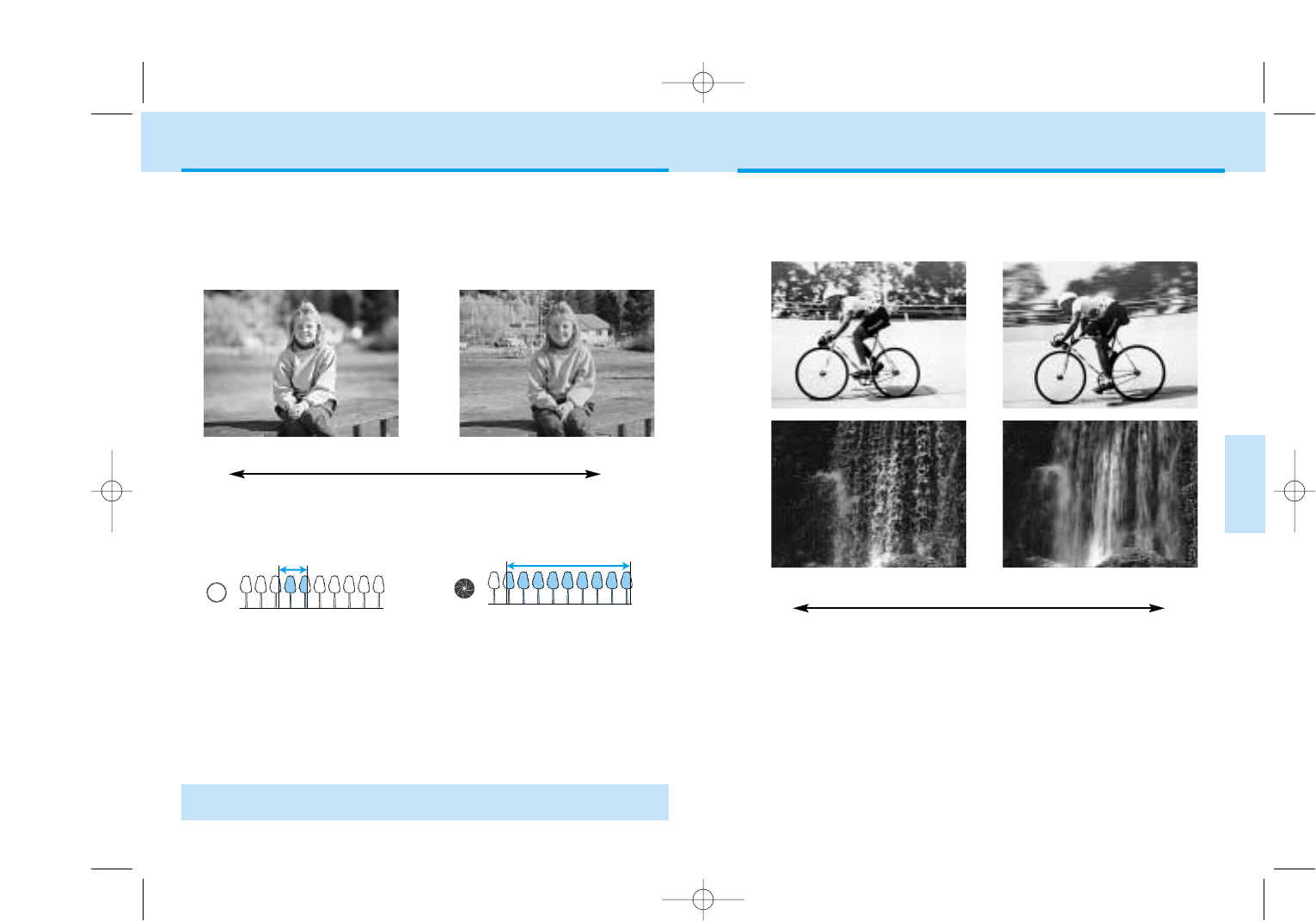
53
CREATIVE
EXPOSURE
52
Fast Shutter Speed
Slow Shutter Speed
SHUTTER CONTROL
Slow shutter speeds will make a
moving subject appear to flow,
creating a feeling of motion.
In addition to controlling the duration of the exposure, shutter speeds
determine how moving subjects will appear in the final image. Use a fast
shutter speed to stop the motion of your subject, use a slow shutter
speed to blur the motion.
Fast shutter speeds can stop the
action and also help prevent
blurring caused by camera
movement during exposure,
known as camera shake.
APERTURE CONTROL
Large Aperture
(small f-number)
Small Aperture
(large f-number)
Range in focus is deeper.
Range in focus is narrower.
The size of the aperture (lens opening) determines the depth-of-field of
the final image as well as the intensity of the light falling on the film.
Depth-of-field is the range in front of and behind the subject that appears
sharp in the final image.
Depth of field increases as the focal length
decreases. The wide angle position of the lens will have a greater
depth of field at a given aperture than at the telephoto position.
Large apertures (small f-numbers)
limit the depth-of-field to a narrow
range in front of and behind the
point of focus. Set a larger
aperture when photographing
portraits to make your subject
stand out from the background.
• Usable apertures will depend on the aperture range of the lens you are
using.
Small apertures (large f-numbers)
provide greater depth-of-field. Set
a small aperture when pho-
tographing landscapes to ensure
your entire scene is sharp.
f/2.8 f/4 f/5.6 f/8 f/11 f/16
Large
Small
1/4000s 1/250s 1/125s 1/45s 1/8s 1s 6s 30s
Fast
Slow
9222-2163-11 MM-B108 (E).qxd 01.8.3 16:11 Page 52


















